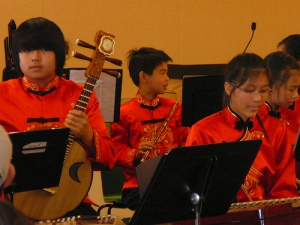
I had come across an old (May 17, 2007) New York Times piece by Sam Roberts yesterday while doing some searches for the Aging Audience of Classical Music issue. The piece, titled “New Demographic Racial Gap” is outlining the age gap between the dominant majority in the US and the [still growing] ethnic minorities. To put it in a nutshell the white population in the US is aging faster than the ethnic minority populations which has some implications that the article opens with
That development may portend a nation split between an older, whiter electorate and a younger overall population that is more Hispanic, black and Asian and that presses sometimes competing agendas and priorities.
“The new demographic divide has broader implications for social programs and education spending for youth,” said Mark Mather, deputy director of domestic programs for the Population Reference Bureau, a nonpartisan research group.
“There’s a fairly large homogenous population 60 and older that may not be sympathetic to the needs of a diverse youthful population,” Dr. Mather said.
but has other implications with regards to the Aging Audience in Classical Music debate. See all the current data, especially that compiled by the recent NEA survey as well as other sources is pointing to an audience for Classical Music (as well as other arts institutions) that is aging faster than the population of the US as a whole. And the above piece is claiming that the white population of the US is aging faster than the population of the US as a whole. Think about those last two statements for a bit.
If the implications aren’t entirely apparent for you folks let me state it a bit more bluntly: If the white population in the US is aging at a faster rate than the population of the US as a whole and the Classical Music audience is aging at a faster rate than the population of the US as a whole I’m wondering if the rate of the aging white population is at all correlated to the rate of Classical music audiences.
One of the other things the data states is that ethnic minorities are far less likely than the [white] ethnic majority to attend arts events which lends some more weight to the idea of Classical Music audiences (in the US) being more of a Caucasian Euro-American cultural artifact. Part of the issue is the relative lack of ethnic minorities in Orchestras (roughly 13%) across the country, well below national average (roughly 33%) of ethnic minorities in the US. It’s difficult to show you’re a part of the local community if your musicians don’t reflect the folks in the community. Some organizations and Orchestras are actively trying to bring more blacks and Latinos into the field as I discussed a bit in a previous post, but by far the more interesting thing is the rising number of non-Western Orchestras in the US.
What I’ve been doing lately is looking at how the high density ethnic minority regions in the US also correspond with a relatively high number of non-Western Orchestras and ensembles. For example, I’ve found that the Bay Area, with a Chinese-American population close to half a million, sports nearly 2 dozen active traditional Chinese Orchestras. Same can be found in regions that have a high density of ethnic groups throughout the states. There’s still a demand for “High Art Music” –it’s just that ethnic populations are demanding their High Art Music rather than European High Art Music. Question is, can Western Classical music institutions in this country adapt enough to account for that change in taste or will they continue to appeal to a primarily more rapidly aging white audience? And what happens when that ethnic majority demographic becomes a minority as folks are projecting will happen by 2050?
In the end, there’s far more demand for Orchestras than data focusing on Western styled-orchestras would indicate. It’s just that this demand is going to be filled by Orchestras that play music the growing ethnic minorities in this country want to hear.
_____________________
Related link:
Portions of this post were adapted from a conversation I’ve been having with Greg Sandow on my facebook page. The full discussion may be found here: http://www.facebook.com/silpayamanant/posts/226938043986077


You’re aware that the Hispanic Orchestra in New York just went under aren’t you?
LikeLike
Other than the Boston Latin American Orchestra and a handful of the groups around Florida, I know little about the orchestras of that demographic. I couldn’t find anything about it but is that the actual name of the ensemble? Did it play exclusively Latin music or was it just an ensemble comprised of Hispanics/Latinos that played Western Music?
The sad fact about the Hispanic/Latino population of the US is the social-economic bracket the group as an average is in (below the national average). Which is what really distinguishes some of the Asian (Chinese and South Asian) populations, and until this decade (due to increasing number of refugees and asylum seekers) the Middle Eastern population.
There are at least a hundred Chinese Orchestras (and by Chinese Orchestra, I mean traditional Chinese Orchestras with the standard instrumentation found in that kind of ensemble) with more than half of those formed withing the past 20 years in the US. Similar trends for the Arabic takht and firqat and Turkish fasli orchestras in the country. Sure, some fold, others get absorbed (e.g. the two Arab orchestras in the Dearborn/Detroit area which are now simply the Michigan Arab Orchestra) but on the whole these are growing in number.
LikeLike